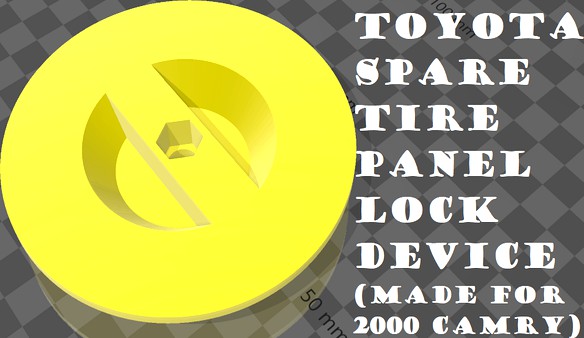Thingiverse

Toyota Spare Tire Panel Lock Device
by Thingiverse
Last crawled date: 5 years, 4 months ago
I drive old cars. All of them were purchased new, and I still own them. I keep them running myself, a fact I take great pride in.
This particular thing is for a part to my 2000 Toyota Camry. I imagine that it would also fit on the Avalon and some other Toyota cars from the time period. but I can't say which.
This part replaces the panel lock/nut thingy that covers the spare tire in the trunk. Look at the pictures. If yours looks like that, this will likely fit your car. It uses the original nut from the original part. If you don't have one, I imagine that you could find a suitable replacement at you local DIY or auto parts store.
Some additional thoughts:
1) Use a durable filament. ABS or PETG will likely work fine. PLA is likely too brittle.
2) Use a high infill percentage. I used 50% on my prototype. It works, but feels less sturdy than I would like. I would likely use 100% on future prints.
3) Alterations from original part: All thicknesses are slightly increased, and the nut now inserts from the top rather than the bottom to reduce the chance of pull through.
This particular thing is for a part to my 2000 Toyota Camry. I imagine that it would also fit on the Avalon and some other Toyota cars from the time period. but I can't say which.
This part replaces the panel lock/nut thingy that covers the spare tire in the trunk. Look at the pictures. If yours looks like that, this will likely fit your car. It uses the original nut from the original part. If you don't have one, I imagine that you could find a suitable replacement at you local DIY or auto parts store.
Some additional thoughts:
1) Use a durable filament. ABS or PETG will likely work fine. PLA is likely too brittle.
2) Use a high infill percentage. I used 50% on my prototype. It works, but feels less sturdy than I would like. I would likely use 100% on future prints.
3) Alterations from original part: All thicknesses are slightly increased, and the nut now inserts from the top rather than the bottom to reduce the chance of pull through.
